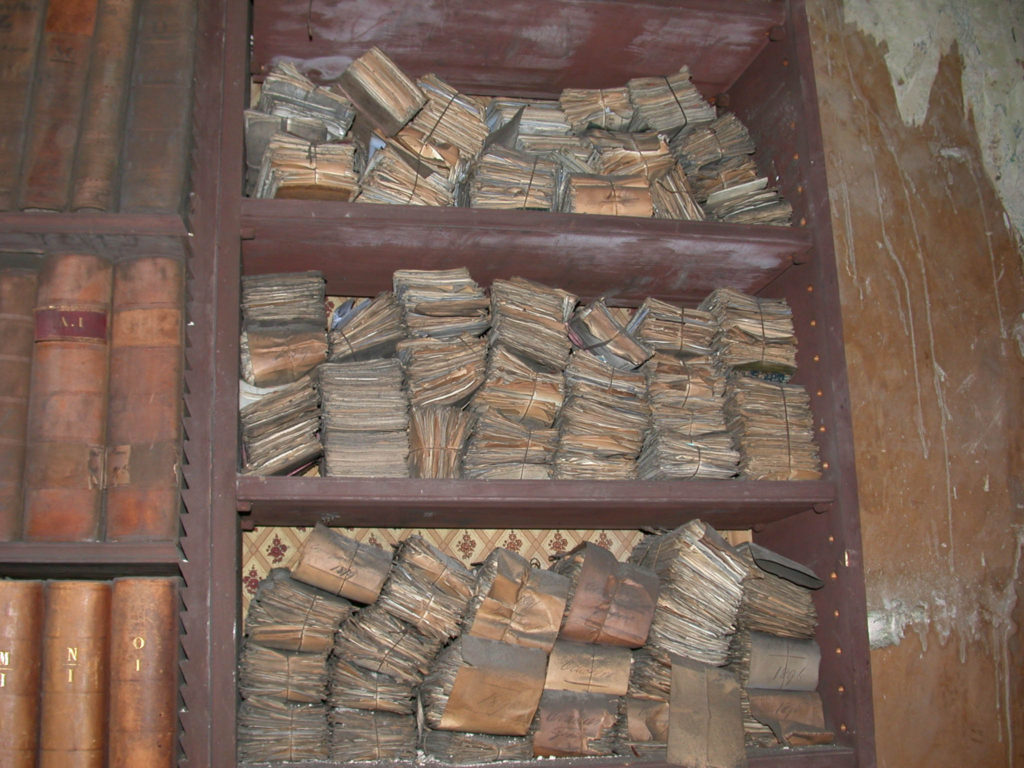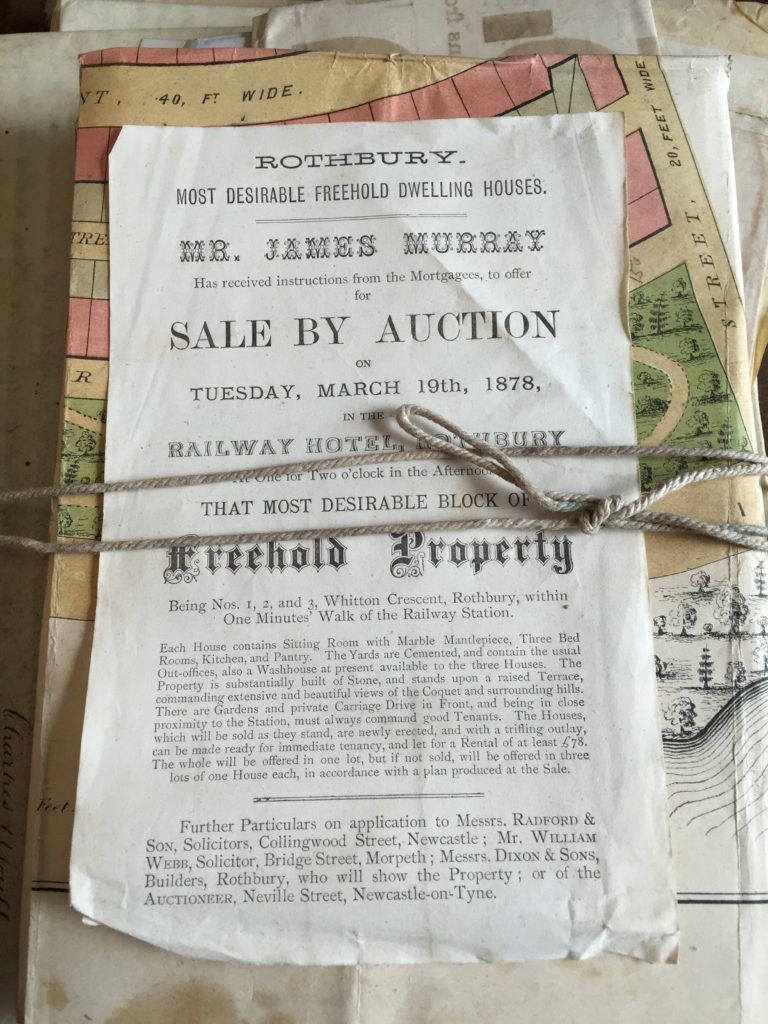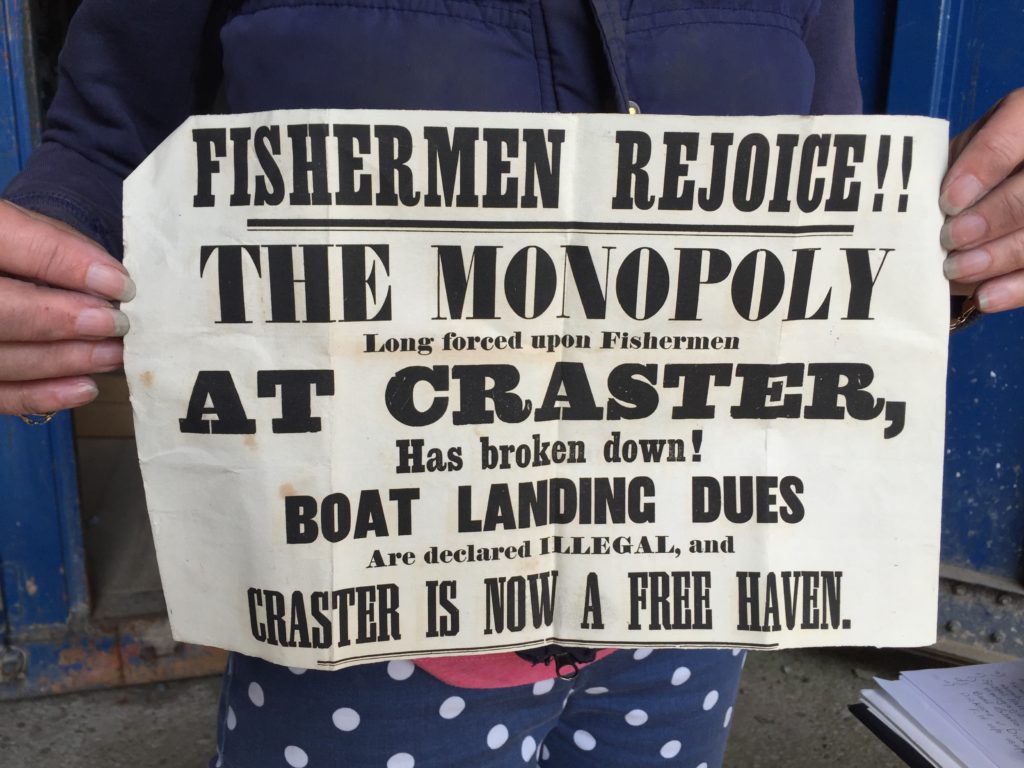The story of how the Dickson, Archer and Thorp collection came to be acquired by Northumberland Archives is almost as rich and compelling as its 200 year contents. Often described as a ‘time capsule’ due to the detail it can offer us about Northumberland’s social, political and economic story, this value had been left largely unexplored until its recent acquisition by the Northumberland Archives.

The Dickson, Archer and Thorp collection is the culmination of work from a 200 year old Alnwick legal practice. Items within the collection can be dated beyond the practice’s establishment in the 18th century right through to the death of its last partner, Mr Reginald Thorp, in 2003. It is the only legal collection in the care of Northumberland Archives to have this level of historical volume and scope.
Notable names peppered the clientele of Dickson, Archer and Thorp; including Grace Darling and her family, The Duke of Northumberland, the Armstrong family and the Liddell (Ravensworth) family. The wills and testimonies of these individuals can be found within the collection, nestled alongside those of ‘ordinary’ locals. This mixed bag enables us to paint a captivating picture of Northumberland using the collection’s marriage, death and criminal records, as well its contemporary stamp duties and manorial papers. The collection also follows the furtherance of industry in Northumberland, by containing records relaying to notable companies such as the Amble Timber and Saw Mill Company and the Hardy’s Fishing Company of Alnwick and Warkworth Harbour.

A Hidden Treasure
However, although the collection possesses massive local and national significance, its secrets had lain mostly untouched for the vast majority of the 20th century. With the collection kept privately within Dickson, Archer and Thorp’s three-story office in Narrowgate, Alnwick.
The office was described by those who entered as ‘Dickensian,’ on account of the floor to ceiling papers and legal materials. These papers, decades old, were neatly labelled and bundled together creating a treasure trove for the enthusiastic researcher.


Northumberland Archives staff were first able to explore this exciting world during the 1970s when Mr Thorp approached them to assess the collection. This initial work was carried out over a ten year period, stretching through the 70’s and 80’s. But the collection’s sheer scope and scale made creating a complete inventory an almost impossible task. Archives staff were hindered further due to a lack of artificial light within the building, meaning they could only work during the summer months. Due to these obstacles less than 10% of the whole collection was actually catalogued during this period, but its historical importance had already become glowingly apparent to archivists.
Public Auction and Benefactors
Upon the aforementioned Mr Thorp’s death the collection became the property of his heirs, whom decided to pass it on through auction. In 2005 a public auction threatened the integrity of the collection by potentially dividing it piecemeal. Some papers fell into private hands whilst others, such as some of the practice’s own business records, were secured for Northumberland Archives through the generosity of a private benefactors.

The bulk of the collection remained in situ at the Narrowgate office, before being purchased by a postal historian who subsequently offered a significant part of the collection to Northumberland Archives. The collection was, at this time, independently assessed as being ‘the most significant collection relating to the history of Northumberland remaining in private hands.’
From Barn to Archive
From 2005 onwards the then owner kept the collection in a barn on his property, whilst passing between 10 – 15% onto interested parties across the world. Some of these items were eventually deposited with Northumberland Archives by public spirited purchasers. The items is his care that were eventually offered to Northumberland Archives comprised approximately 240 large banker boxes, 20 smaller boxes and a selection of plans.
This period in the collection’s journey indicated two things; firstly there was a growing, global interest in the collection and secondly there was a serious need to preserve its authentic integrity as a whole or risk its dissemination across the world.

In 2015 Northumberland Archives was approached and asked if we would be interested in purchasing the remaining collection for the sum of £150,000. In light of the collection’s historic and cultural significance the sum was declared reasonable and the decision to proceed with the purchase was made. The eventual acquisition was made possible through internal fundraising as well as grants and charitable funding from a range of grant giving bodies including The Heritage Lottery Fund, Lord Crewe Charity, Friends of National Libraries and the V&A Purchase Fund.
The acquisition was formalised in 2017, with a week set aside for archival staff to box and roughly list this immense collection. Finally the collection’s journey had brought it to be stored in perpetuity by Northumberland Archives, allowing it to be valued by all members of the public.

The Future
The future will see the beginnings of in-depth research into the collection; facilitated by a process of comprehensive cataloging. This work will be largely conducted by volunteers, with funding from the Heritage Lottery Fund allowing the Northumberland Archives to engage a Volunteer Co-ordinator. You can follow this project, and the secrets it uncovers, through this blog or the Archives’ other social media platforms.
